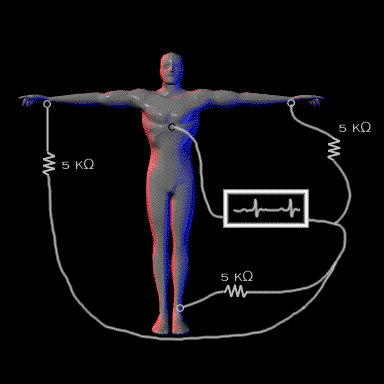
The concept of the unipolar leads was originally developed by Dr. Frank Wilson, a student of Sir Thomas Lewis. It was Dr. Wilson who brought the electrocardiogram to the United States from England. Dr. Wilson connected a resistor of 5,000 ohms to each of the limb leads in order to minimize effects of skin resistance and then combined the leads to form the indifferent reference electrode,. This is referred to as the "Central Terminal." He then positioned an exploring electrode at various locations on the chest wall to record electrical activity that was closer to the heart than that recorded by the limb leads.
You should recognize that the chest leads are not truly unipoplar because the reference, or indifferent lead is comprised of the combined limb leads rather than ground. Thus, although the term "unipolar" is a misnomer, it has become part of the ECG vernacular and is likely to remain so.
